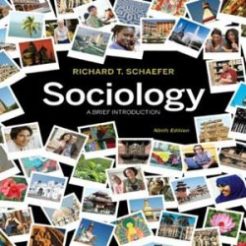Description
All resources are in electronic format and can be downloaded from your account or email – How to Download. Payments will be processed instantly after checkout. Please note that all sales are final and non refundable. If you still have questions, find answers on our FAQ page or just send us an email at inquiry@testbankcorp.com, we will respond as soon as possible.
Multiple Choice
1. _______________ argued that the major activities of management and leadership are played out differently; but both are essential to an organization
a. Jago
b. Zaleznik
c. Kotter
d. Bass
Ans: C
Cognitive Domain: Knowledge
Answer Location: Leadership and Management
Question Type: MC
2. Power is described as
a. A relational concern for both leaders and followers
b. Use of force over others to manipulate them
c. Letting any follower do whatever he or she wants
d. Forcing people to engage in extreme behaviors
Ans: A
Cognitive Domain: Comprehension
Answer Location: Leadership and Power
Question Type: MC
3. The “Great Man/Person” trait definition of leadership
a. Is about the interaction between leaders and followers
b. Can be learned
c. Is restricted to those with inborn talent, qualities, or characteristics
d. Is about developing leadership skills
Ans: C
Cognitive Domain: Knowledge
Answer Location: Leadership Described
Question Type: MC
4. The four key elements of the definition of leadership used in the text are
a. Trait, goal, emergent, expert
b. Process, influence, group, goal
c. Values, ethics, process, performance
d. Capability, competency, skill, relationship
Ans: B
Cognitive Domain: Comprehension
Answer Location: Leadership Defined
Question Type: MC
5. In their discussion about management and leadership, Bennis and Nanus said that leaders
a. “Do things right”
b. “Do the right thing”
c. “Do what followers want”
d. “Do enough to get the job done”
Ans: B
Cognitive Domain: Comprehension
Answer Location: Leadership and Management
Question Type: MC
6. People in the organization like me because I know what I am doing and share knowledge with followers. I have
a. Position power
b. Personal power
c. Information power
d. Legitimate power
e. Reward power
Ans: B
Cognitive Domain: Comprehension
Answer Location: Leadership and Power
Question Type: MC
7. Chief executive officers of any company have
a. Legitimate power
b. Referent power
c. Expert power
d. Personal power
e. Emergent power
Ans: A
Cognitive Domain: Comprehension
Answer Location: Leadership and Power
Question Type: MC
8. I can emerge as the leader in my group project by
a. Telling all group members exactly what to do
b. Communicating and listening well with group members
c. Sitting at the head of the table
d. Being designated by the instructor as the group leader
Ans: B
Cognitive Domain: Comprehension
Answer Location: Assigned versus Emergent Leadership
Question Type: MC
9. Kellerman argues that in the last forty years there has been a shift in leadership power from
a. Shared power to top down power
b. Leader dominated power to shared power with followers
c. Follower dominated power to shared power with leaders
d. Referent power focus to coercive power focus
Ans: B
Cognitive Domain: Analysis
Answer Location: Leadership and Power
Question Type: MC
10. Information power is
a. Associated with having formal job authority
b. Based on followers liking of their leader
c. Derived from having the ability to provide rewards
d. Focused on the social contract between leaders and followers
e. Derived from possessing knowledge that others want or need
Ans: E
Cognitive Domain: Knowledge
Answer Location: Leadership and Power
Question Type: MC
11. Who is said to engage leadership?
a. Followers
b. Groups
c. Organizations
d. Leaders
Ans: D
Cognitive Domain: Analysis
Answer Location: Definition and Components
Question Type: MC
12. Who is responsible for the leadership process?
a. Followers
b. Leaders
c. Organizations
d. Followers and leaders
Ans: D
Cognitive Domain: Analysis
Answer Location: Definition and components
Question Type: MC
13. The common goals element of the definition of leadership means
a. Leaders and followers have a mutual purpose
b. Leaders and followers have similar personalities
c. Leaders and followers have similar interests
d. Leaders and followers have a mutual desire for power
Ans: A
Cognitive Domain: Comprehension
Answer Location: Definition and components
Question Type: MC
14. The statement “She/he is born to be a leader” suggests a
a. Process definition of leadership
b. Trait definition of leadership
c. Gender bias definition of leadership
d. Coercive definition of leadership
Ans: B
Cognitive Domain: Comprehension
Answer Location: Definition and components
Question Type: MC
15. Social identity theory would suggest leadership emergence occurs when
a. The group identifies with the leader
b. They acquire the skills to do the job well
c. The group assigns them the role of leader
d. They become most like the group prototype
Ans: D
Cognitive Domain: Comprehension
Answer Location: Assigned versus Emergent Leadership
Question Type: MC
16. Coercive leadership
a. Is not allowing a player to play in competition because he or she was late to practice
b. Is forcing followers to engage in extreme behaviors
c. Is using the influence relationship to affect change
d. Is supporting ethical behavior amongst team members
Ans: B
Cognitive Domain: Analysis
Answer Location: Leadership and Coercion
Question Type: MC
17. To coerce means to
a. Influence others toward a common goal
b. Influence others to behave ethically
c. Influence others to do something against their will
d. Influence others using positive rewards
Ans: C
Cognitive Domain: Comprehension
Answer Location: Leadership and Coercion
Question Type: MC
18. Non-leadership is
a. A relational interaction between a group of people toward common goals
b. Sharing goal development with followers
c. Leadership that is focused on individual goals
d. Leadership that is focused on working with followers to achieve common goals
Ans: C
Cognitive Domain: Comprehension
Answer Location: Leadership and Coercion
Question Type: MC
19. The primary functions of leadership are
a. Directing, ruling, encouraging
b. Aligning, visioning, inspiring
c. Building, maintaining, staffing
d. Budgeting, controlling, problem solving
Ans: B
Cognitive Domain: Comprehension
Answer Location: Leadership and Management
Question Type: MC
20. Simonet and Tett (2012) found that management is distinct from leadership by
a. Extrinsic motivation
b. Intrinsic motivation
c. Strategic planning
d. Creative thinking
Ans: A
Cognitive Domain: Comprehension
Answer Location: Leadership and Management
Question Type: MC
21. Differences between management and leadership include
a. Leaders are emotionally involved, whereas managers have low emotional involvement
b. Managers shape ideas, whereas leaders are reactive in solving problems
c. Leaders are unidirectional influencers, whereas managers are multidirectional influencers
d. Leaders are controlling, whereas managers are motivating
Ans: A
Cognitive Domain: Comprehension
Answer Location: Leadership and Management
Question Type: MC
22. The primary functions of management are
a. Producing change and movement
b. Producing positive leadership outcomes
c. Producing a creative vision
d. Producing order and consistency
Ans: D
Cognitive Domain: Comprehension
Answer Location: Leadership and Management
Question Type: MC
23. One key to emerging as a leader
a. Is to be perceived by others as likable and knowledgeable
b. Is to be forceful in asserting your opinions
c. Is to avoid listening to opposing opinions
d. Is to be perceived by others as commanding and dominant
Ans: A
Cognitive Domain: Comprehension
Answer Location: Assigned versus Emergent
Question Type: MC
24. Which of the following bases of power are considered personal power?
a. Information
b. Referent
c. Coercive
d. Reward
e. Legitimate
Ans: B
Cognitive Domain: Comprehension
Answer Location: Leadership and Power
Question Type: MC
25. Scholarly research and popular work on the nature of leadership exploded in this decade
a. 1950
b. 1960
c. 1970
d. 1980
Ans: D
Cognitive Domain: Knowledge
Answer Location: Leadership Defined
Question Type: MC
26. The emerging approach called servant leadership
a. Focuses on followers needs
b. Focuses on traits
c. Focuses on adapting to solve problems
d. Focuses on spirituality
Ans: A
Cognitive Domain: Comprehension
Answer Location: Leadership Defined
Question Type: MC
27. Which way of classifying leadership involves capabilities to make leadership possible?
a. Group process
b. Personality
c. Skills
d. Power
Ans: C
Cognitive Domain: Comprehension
Answer Location: Leadership Defined
Question Type: MC
28. The process definition of leadership implies
a. Leadership is linear
b. Leadership is one-way, top-down
c. Leadership is leader centered
d. Leadership is reciprocal between leaders and followers
Ans: D
Cognitive Domain: Knowledge
Answer Location: Definition and Components
Question Type: MC
29. Although there are clear differences between management and leadership,
a. There is little research to support one or the other
b. Leadership is more valued than management
c. The two constructs overlap
d. Management is more valued than leadership
Ans: C
Cognitive Domain: Comprehension
Answer Location: Leadership and management
Question Type: MC
30. Argued that leaders and managers are distinct; they are different types of people
a. Jago
b. Zaleznik
c. Kotter
d. Bass
e. Burns
Ans: B
Cognitive Domain: Knowledge
Answer Location: Leadership and management
Question Type: MC
31. Leaders’ power to provide pay raises and promotions is
a. Reward
b. Coercive
c. Legitimate
d. Referent
e. Expert
Ans: A
Cognitive Domain: Comprehension
Answer Location: Leadership and Power
Question Type: MC
32. Defining leadership as a process means
a. It is a transactional event.
b. It is focused on influence.
c. It is an inborn trait or characteristic
d. It may only take place in groups.
Ans: C
Cognitive Domain: Knowledge
Answer Location: Leadership Defined
Question Type: MC
33. The following is not one of the classifications for a definition of leadership:
a. The focus of group process
b. An artistic process
c. A behavior
d. A personality trait
e. An instrument of goal achievement
Ans: B
Cognitive Domain: Comprehension
Answer Location: Leadership Defined
Question Type: MC
34. The primary functions of management are
a. Planning, organizing, staffing, and controlling.
b. Forming, storming, norming, and reforming.
c. Building, breaking down, rebuilding, and maintaining.
d. Ruling, listening, adapting, and adjusting.
e. Directing, framing, extending, and encouraging.
Ans: A
Cognitive Domain: Knowledge
Answer Location: Leadership and management
Question Type: MC
35. Some positive communication behaviors that account for successful leader emergence are
a. Sense of humor, facial expressiveness.
b. Being dominant, speaking frequently.
c. Differentiating oneself from the group, challenging group norms.
d. Being informed, initiating new ideas.
Ans: D
Cognitive Domain: Comprehension
Answer Location: Assigned versus Emergent
Question Type: MC
36. Leadership definitions have evolved during the 20th century in the following way:
a. The trait approach remains the most popular approach over time.
b. A leader’s power remains a key requirement for goal accomplishment.
c. Focus on leadership effectiveness became prominent in the 1970s.
d. Leadership research peaked in the 1980s.
Ans: D
Cognitive Domain: Comprehension
Answer Location: Leadership Defined
Question Type: MC
37. Fisher associates all of the following positive communication behaviors with emergent
leadership, except
a. Being verbally involved
b. Establishing roles
c. Seeking others’ opinions
d. Initiating new ideas
Ans: B
Cognitive Domain: Comprehension
Answer Location: Assigned versus Emergent
Question Type: MC
38. You are told you need to work weekends. Your supervisor gives you a pay raise in return.
What type of power is your supervisor using?
a. Referent
b. Expert
c. Legitimate
d. Reward
e. Coercive
Ans: D
Cognitive Domain: Comprehension
Answer Location: Leadership and Power
Question Type: MC
39. Leadership is a phenomenon that takes place in the context of the interaction between leaders
and followers. This viewpoint would suggest leadership is accessible by all:
a. Reward
b. Referent
c. Process
d. Trait
e. Legitimate
Ans: C
Cognitive Domain: Comprehension
Answer Location: Leadership Defined
Question Type: MC
40. You really enjoy working for your boss and look up to her or him as a role model. You are
more than willing to work hard for the organization because of your relationship with your boss.
This is an example of
a. Legitimate power
b. Coercive power
c. Position power
d. Personal power
e. Reward power
Ans: D
Cognitive Domain: Application
Answer Location: Leadership and Power
Question Type: MC







Reviews
There are no reviews yet.